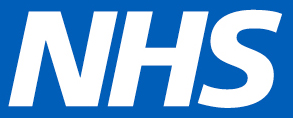Driver diagrams are a powerful tool for visualising and planning improvement projects. They provide a structured approach to understanding the factors that contribute to achieving a specific goal.
In a driver diagram, the goal is represented at the top level, followed by the primary drivers, which are the high-level factors that need to be influenced to achieve the goal. Under each primary driver, there can be secondary drivers, which further break down the factors that contribute to the primary driver. For example:

How do you create a driver diagram?
To create a driver diagram, start by setting a specific and measurable aim. This aim should be meaningful to all stakeholders involved. Next, identify the primary drivers that need to be addressed to achieve the aim. These primary drivers will help you identify process measures to evaluate the reliability of processes that impact the aim. Then, consider the activities or interventions that can positively influence the primary drivers. These activities are the secondary drivers and should have an effect on at least one primary driver.
To help you get started with developing your own driver diagram, you can use a template available here.
Watch Chris Learoyd’s introduction to driver diagrams and learn how to create one with your team online.
A driver diagram captures project details like the SMART goal, key elements, and change ideas to be tested with PDSA cycles. This recording is from the West of England Academy AHSN Winter Series 2021. If you’re interested in attending similar training please visit our events page.
Four steps for a successful driver diagram
- Clearly state your goals in your Aim. Make it specific and measurable. Avoid using vague phrases like ‘to reduce’ or ‘to improve’. The Aim should be meaningful to staff, patients, and families. A well-written Aim can help you determine your outcome Measure.
- Identify the main topics and important areas that need to be addressed to achieve your Aim in the Primary Drivers, such as Patient Choice. Well-written Primary Drivers can help you identify your process measures, which assess the reliability of processes that may impact the aim of the project.
- Consider which activities can have a positive impact on the Primary Drivers. For example, in the case of Patient Choice, it could be addressing complaints or conducting ward rounds. These activities are Secondary Drivers that can influence more than one Primary Driver and help you identify relevant Change Ideas.
- Carefully consider your Change Ideas. They should have an impact on at least one Secondary Driver and help you achieve your Aim. These are the important changes that will be included in your project plan.
Templates
- A copy of the driver diagram template is available here.



